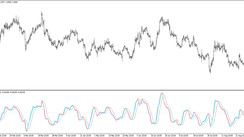Introduction
In the ever-evolving ecosystem of financial markets, where intricate patterns and dynamics define the day-to-day movements, the role of market sentiment cannot be overstated. It emerges as a focal point in guiding investors through the oscillating pathways that constitute the stock market, foreign exchange spheres, and the commodities landscape. This guide seeks to shed light on the intricate patterns that weave the fabric of market sentiment, offering a deep-dive into its complex elements and presenting a roadmap for leveraging it to enhance investment outcomes.
Defining the Contours of Market Sentiment
What is Market Sentiment?
Commonly referred to as investor sentiment, market sentiment essentially portrays the collective psychological attitude harbored by investors towards investments or markets. These sentiments often oscillate between bullish — a term denoting optimism and a positive outlook on market trends — and bearish — which signals a predilection towards pessimism and an expectation of downward trends. Additionally, there exists a neutral sentiment, which foresees a stable market with marginal fluctuations.
Unraveling the Influences on Market Sentiment
Remarkably, market sentiment doesn’t operate in a vacuum; it is finely tuned to a host of influences ranging from tangible factors such as economic indicators to intangible elements like rumors and trending news. In the modern era, platforms such as social media have risen as potent influencers, giving rise to phenomena such as meme stocks that shape market sentiment significantly. The dynamic nature of these influencers demands vigilant observation and nuanced understanding to effectively navigate the investment landscape.
Decoding Market Sentiment Indicators
Utilizing the Right Tools
To stay a step ahead in the dynamic financial markets, investors leverage a range of sophisticated tools that help gauge market sentiment. These include but are not limited to:
- VIX Index: This tool, formalized as the Chicago Board Options Exchange Volatility Index, serves as a predictive tool for anticipated market volatility, basing its insights on the S&P 500 index options prices.
- Moving Averages: A dynamic tool that offers insights into market trends by juxtaposing a series of average values against the current prices of a security, presenting a constantly updated perspective on market directions.
- Volume: Here, a meticulous analysis of the number of shares traded can reveal the underlying sentiment in the market, with high sell transactions pointing to a bearish sentiment and a high volume of buy transactions indicating a bullish sentiment.
- High-Low Index: This diagnostic tool aids in discerning the strength of market trends, offering cues to potential bullish or bearish waves.
Survey-Based Sentiment Analysis
Adding another layer to the analysis are sentiment surveys like the well-recognized AAII investor sentiment survey, which aggregates the market outlook of individual investors over a forthcoming six-month period, offering a pulse on the prevailing market sentiment and emerging trends.
Market Sentiment Vs. Fundamental Analysis
In the vast and complex world of investments, a perpetual oscillation is noted between two critical yet divergent approaches to deciphering market trends and crafting meticulous investment strategies: market sentiment analysis and fundamental analysis. These philosophies, though standing at distinct junctures, serve as a beacon for investors, guiding them in navigating the tumultuous waters of financial markets. Let’s delve deeper to dissect these approaches and unravel the secrets behind leveraging them effectively:
The Essence of Market Sentiment Analysis
- Emotional Undercurrents: This approach is anchored in understanding the emotional and psychological factors swaying the investors. It is a dynamic and fluid perspective, focusing on the subjective interpretations of market data rather than concrete figures.
- Trend Analysis: Market sentiment is heavily reliant on discerning patterns and trends through various tools like moving averages and the high-low index, which provide predictive insights into potential market movements.
- Real-time Responsiveness: Market sentiment analysis is tuned to respond swiftly to the real-time shifts in the market, often offering an immediate reaction to news headlines, social media trends, and more, thereby offering a pulse of the immediate market reactions.
Diving into Fundamental Analysis
- Data-Driven: Contrary to market sentiment analysis, fundamental analysis dives deep into empirical and factual data, exploring the intrinsic value rooted in hard facts and quantitative analyses.
- Long-Term Focus: Fundamental analysts often focus on a company’s long-term viability, analyzing assets, earnings, and dividends to understand the potential growth over a more extended period.
- Stability over Speculation: Choosing a path less swayed by daily market fluctuations, this approach centers around a core belief in the stability of well-analyzed investments, avoiding speculative trends and staying grounded in meticulous research.
Synthesizing Sentiment and Fundamentals: Crafting a Master Strategy
- Complementary Approaches: While at first glance these approaches may seem at odds, a deeper understanding reveals a symbiotic potential where the fluid insights from sentiment analysis can complement the data-backed grounding offered by fundamental analysis, crafting a strategy that is both reactive and rational.
- Risk Mitigation: By marrying the immediate responsiveness of market sentiment analysis with the structured, research-backed approach of fundamental analysis, investors can forge strategies that balance risk and reward proficiently.
- Versatility: Harnessing the strengths of both approaches ensures a versatile strategy, capable of adapting to the dynamic market fluctuations while holding ground with a solid foundation in facts and figures, offering a harmonized pathway in the investment landscape.
Leveraging Market Sentiment for Individual Investors
Crafting a Balanced Investment Strategy
For individual investors, understanding market sentiment can be likened to possessing a powerful compass that guides investment decisions. This, however, is a compass that should be used with caution, bearing in mind that market sentiment sometimes strays from fundamental realities. Consequently, a balanced approach that pairs insights from sentiment analysis with a sturdy foundation in fundamental analysis promises a strategy that is both holistic and informed.
Learning from Historical Scenarios
Delving into historical episodes such as the dot-com bubble of the late 90s offers invaluable lessons on the imperative of aligning market sentiment analysis with fundamental analysis. These reflections reinforce the necessity for a comprehensive approach to investment, ensuring informed decisions that marry sentiment with substantiated facts.
FAQs
Is Market Sentiment a Reliable Indicator?
While it provides a lens to view the prevalent mood in the market, market sentiment may not always be in sync with fundamental metrics, necessitating a multidimensional approach to investment where various analytical tools are employed in tandem to forge sound investment pathways.
How Can One Effectively Read Market Sentiment?
Understanding market sentiment is a nuanced process that involves identifying the core strands — bullish, bearish, and neutral. Leveraging a plethora of indicators such as VIX, moving averages, and the high-low index can facilitate a robust understanding of the prevailing market sentiments, forming the bedrock for informed investment choices.
Conclusion
As we delve deeper into the sophisticated world of financial markets, the understanding of market sentiment becomes an indispensable ally. By amalgamating the rich insights derived from sentiment analysis with the grounded approach of fundamental analysis, investors can craft strategies that are both robust and responsive to market dynamics. It invites investors to navigate the investment seas with a well-calibrated compass, one that balances the fluidity of sentiment with the steadfastness of facts, promising a journey towards fruitful investment outcomes.





